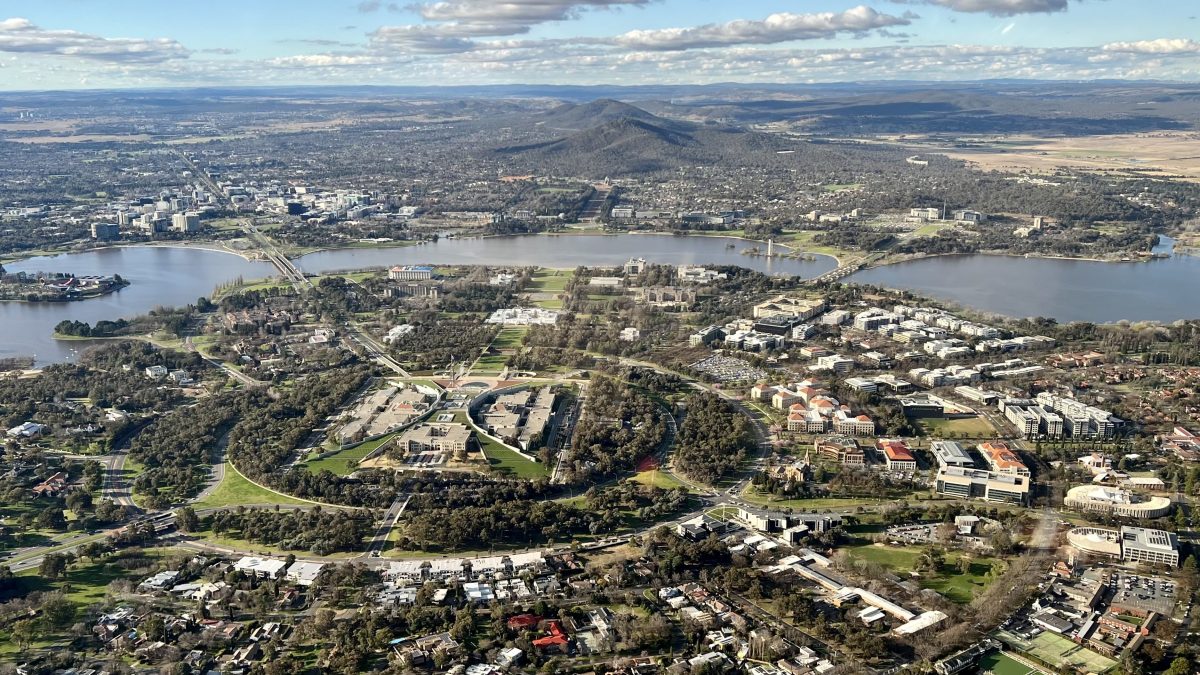
As the government pushes for greener offices, property advisors warn embodied carbon is a missing piece in Australia’s net zero puzzle. Photo: James Coleman.
A policy designed to cut emissions could end up creating them, with property advisors urging the Federal Government to address critical gaps in its new energy standards before unintended consequences take hold.
Since July, federal agencies have observed a strict policy that new office leases for spaces over 1000 sqm must achieve a minimum 5.5-star National Australian Built Environment Rating System (NABERS) score, as part of their net zero commitment.
But even as a high NABERS score becomes the hot ticket to securing government tenants, the Australian Strategic Property Advisors (ASPA) warns the move could inadvertently generate hundreds of thousands of unnecessary tonnes of carbon, as entities abandon purpose-built offices for new builds.
ASPA managing director Stephen Oxford said while the policy embodied the best of intentions, it overlooked a critical component — embodied carbon, the emissions released during the construction of a building and in the materials that make it.
“The government policy says that if you move from a 4.5 NABERS-rated building to a 5.5, you can cut carbon in half on an operating basis,” he said. “What’s absent from the policy is the impact of the embodied carbon — not only in constructing a new building, but also in the building that’s left behind.”
That embodied cost, he said, can be staggering.
He pointed to the RG Casey Building — a building above 40,000 sqm, with a four on the NABERS scale.
“Typically, to upgrade a building of this scale from 4.5 to 5.5 could cost as little as 70 kg of carbon per square metre, as opposed to 650 kg per square metre for a new build,” he said. “That’s 2800 tonnes of carbon to upgrade versus 26,000 tonnes to build new, so about 10 per cent of the carbon cost.”
Mr Oxford said some of the government’s largest office footprints were particularly concerning.
With multiple buildings totalling about 100,000 sqm of floor space, the National Security Office precinct would cost a staggering 65,000 tonnes of carbon to build, according to industry estimates.
“That’s an astronomical amount of carbon to be releasing at a time when there are 5.5 NABERS-rated buildings available to lease in our city,” he said.
“Number 50 Marcus Clark is still fully leased by the Department of Education, but it’s rumoured they’ll vacate that building and move into a new build in the city in the next couple of years. And 21 Genge Street is the address the ATO left behind for Barton.
“I understand there are specific requirements for security, but on one hand, you’re saying you’re committed to net zero and on the other, making decisions that are literally contributing tens of thousands of tonnes of carbon into our environment.”

ASPA’s Stephen Oxford said the government needed to rethink its office procurement practices. Photo: Michelle Kroll.
In a territory that Mr Oxford said had “the greenest office sector on the planet”, it was also hard to justify the cost to taxpayers.
ASPA calculations indicate new builds are a third more expensive to lease than existing.
Furthermore, while a 5.5-star NABERS building may halve operational emissions, those environmental gains were erased once the carbon cost of a new build was factored in.
“It’s simple to work out,” Mr Oxford said. “For a 40,000 sqm building with a 15-year lease term, you’ve eroded any impact of the operational carbon savings, because of that upfront carbon in its construction. And that’s not even considering the carbon embedded in the building you’ve left behind.”
ASPA is calling for a rethink on what sustainable development means, starting with a shake-up of procurement practices.
It would require a shift away from “monolithic” purpose-built government buildings of tens of thousands of square metres of floorspace.
“They have one use for life and pose an environmental scenario no government in the world should consider optimal,” Mr Oxford said.
“Buildings should be built to live multiple lives — as offices, schools, housing, hotels and student accommodation. Extending the life of an asset is always a more environmentally friendly outcome.
“Instead of a 40,000 sqm building, why not four 10,000 sqm properties all in close proximity, so you can retain that co-location feel, but make it easier to convert those buildings into hotels or schools when you’re ready to move on? It would require compromise, but consider the financial and environmental gains.”
ASPA also wants to see embodied carbon factored into the government’s leasing decisions.
“That would encourage the use of existing buildings over new builds,” Mr Oxford said. “We all like seeing beautiful new buildings, but redundant assets in our CBD and scattered across the country are no good for anyone.”
For more information, visit ASPA.
Original Article published by Dione David on Region Canberra.




